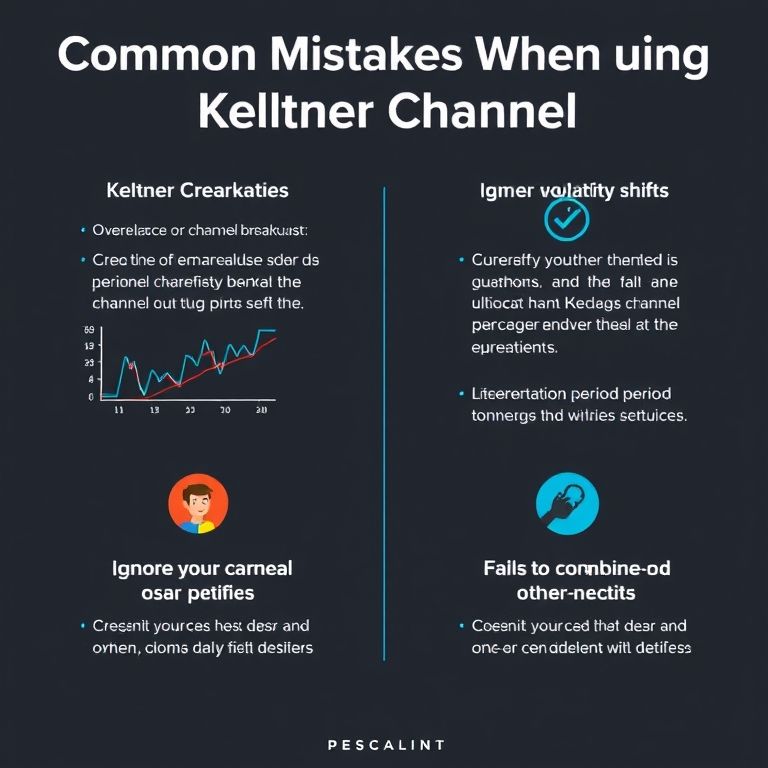Common mistakes when using Keltner Channel
Common Mistakes When Using the Keltner Channel in Prop Trading
Introduction
The Keltner Channel is a versatile volatility envelope that traders across forex, stocks, crypto, indices, options, and commodities actually use day in and day out. It isn’t a magic wand, though—misunderstandings creep in when the channel is treated as a standalone signal or shoehorned into every market regime. This piece dives into what tends to go wrong, how to adapt the approach across asset classes, and what a balanced, forward-looking setup looks like in a world moving toward DeFi, AI, and smarter prop trading.

Common Pitfalls
- Treating the channel as a sole entry trigger. Breakouts from the bands can be noise in quiet markets and false signals when the context isn’t aligned with the broader trend.
- Fixating on a single ATR period across all assets. Different markets move with different rhythms; a 20-period ATR that works for stocks may under- or overstate volatility in crypto.
- Ignoring trend direction. A rising middle line during a downtrend often yields whipsaws if you enter long on every breakout.
- Over-optimizing on backtests. Data-snooping and curve-fitting tempt perfection, but real-time friction, slippage, and commissions change outcomes.
- Mismatched timeframes. A daily channel used for intraday trades can trap you in false reentries; intraday channels may miss bigger-picture context.
- Underestimating liquidity and slippage. Crypto and thinly traded futures can produce breaches that look clean on a chart but burn risk limits in live trading.
- Using the channel in isolation. Price action, volume clues, macro context, and a dash of market psychology make a safer composite.
Asset Class Playbook
- Forex: adaptability matters. Pair-specific volatility and regime shifts mean you tune ATR and lean on the channel with a trend filter from a higher timeframe.
- Stocks and indices: channels work best when aligned with broader market drift. Use the band as a backdrop for price action and a confirmation of momentum rather than a blind entry.
- Crypto: expect bigger channel swings. Widen bands during high-volatility windows and be ready for rapid stop adjustments; liquidity considerations are real.
- Options: channel width becomes part of probability assessment. If the price stays near the envelope, premiums decay can bite; if it breaks, manage delta and gamma risk.
- Commodities: inventory reports and seasonality drive volatility. Treat channel breaks with extra caution around major news events.
Reliability and Strategy
- Use the Keltner Channel as a contextual filter, not the sole signal. Look for confluence with price action, volume spikes, or trend cues.
- Calibrate ATR by asset and timeframe. Start with a baseline, then adapt as liquidity and volatility shift.
- Confirm across timeframes. A trend on the daily chart should give you a directional bias for intraday trades.
- Implement disciplined risk controls. Stop losses near the channel boundary, and scale position sizes with volatility and account tolerance.
- Track volatility regimes. Narrow channels in calm markets demand tighter risk controls; wide channels in volatile regimes call for flexibility.
DeFi, AI, and Prop Trading Outlook
Decentralized finance is pushing data feeds and execution into new arenas. Oracles, front-running risk, and fragmented liquidity pose challenges for channel-based rules that rely on clean price series. Smart contracts can encode Keltner-rule logic for automated, rules-based trading, but reliability hinges on robust data and secure oracles. AI and machine learning are starting to assist parameter tuning, regime detection, and real-time optimization, though they must be grounded in transparent risk controls to avoid overfitting.
Prop trading fits well with a disciplined, diversified approach: cross-asset channels, rigorous backtesting with realistic costs, and scalable risk management that scales with market complexity. The future likely holds more automated, AI-assisted, and on-chain trading experiments that keep the Keltner Channel relevant—if you treat it as a guide, not a verdict.
Promotional takeaway
Common mistakes when using the Keltner Channel? Learn to see them before they ruin a trade. Master the channel, avoid the traps, and trade with confidence. The channel isn’t a shortcut; it’s a compass for informed, protected decisions.
YOU MAY ALSO LIKE




